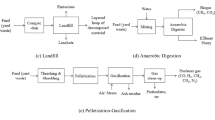Abstract
The textile-printing industry in China makes an important contribution to the national economy. However, the associated pollution problems have caused gradual deterioration to the environment and adverse impacts on the local community. The indicator system of cleaner production gives a powerful tool to measure the level of cleaner production of textile-printing enterprises. In China, it has been a big problem of the textile-printing enterprise that consuming large amounts of fresh water and discharging large number of pollutants, and it is lacking in a scientific water-conservation and waste-reduction cleaner production evaluation system. To solve such problems, the establishment of water-conservation and waste-reduction cleaner production indicator system in textile-printing industry is proposed and assessed by the means of analytic hierarchy process (AHP) in this article. The judgement matrix is then determined with the Delphi Method combined. Finally, with the Yaahp software, the weight of each indicator is obtained. As an effective way to save water resource and reduce waste emission, the cleaner production technique integration is provided for the enterprises to solve the above problems and achieve the goals of saving water and decreasing the amount of disposed pollutants.








Similar content being viewed by others
References
Bai X (2000) Technology of wastewater treatment and its progress. Dye Finish 26(12):39–43
Cai H, Liu Z (2006) Investigation of environmental and economic benefits when implementing clean production in printing and dyeing enterprises. Text Dye Finish J 28(7):25–27
Chen M (2005) Study on water-conservation measures cleaner production of printing and dyeing industry in Zhejiang. Master Thesis Zhengjiang University, Hangzhou
Chen L (2009) Cold pad-batch technique of energy conservation and emission reduction (1). Text Finish J 31(11):51–54
Feng X, Gu Y, Wu X (2001) Treatment of dye intermediate wastewater with countercurrent washing technique. Shanghai Environ Sci 20(1):28–30
Fu J (2004) Recovery system for condensed and cooling water. Dye Finish 30(16):36–38
Gu R (2002) Technology of digital jet printing. Silk 10:24–25
Guo J, Zhang Z, Sun Q (2008) Study and applications of analytic hierarchy process. China Saf Sci J 18(5):148–153
He Z (2006) Development and application of textile digital printing. China Screen Print 7:37–38
Krajnc D, Glavič P (2003) Indicators of sustainable production. Clean Technol Environ Policy 5(3–4):279–288
Li C, Liu G (2008) Some of the energy-conservation measures in printing and dyeing production. The fourth national technical renovation seminar in printing and dyeing industry, Jinan, pp 11–13
Li C, Zhang W (2009) The recycling methods of boiler’s steam condensation water. Sci Technol Assoc Forum 10:82–83
Li Z, Zhang S, Zhang Y, Zhang Y, Wei L (2011) Evaluation of cleaner production audit in pharmaceutical production industry: case study of the pharmaceutical plant in Dalian, P. R. China. Clean Technol Environ Policy 13(1):195–206
Liang H, Jing X (2005) A research on the clean processing technology of the pretreatment of knitted fabrics. Knitt Ind 12:38–40
Lu J (2001) Plasma body and its application in textile industry. Silk 12:19–21
Ministry of environmental protection of the People’s Republic of China (2008) Annual report of China’s environmental statistics in 2008. http://www.mep.gov.cn/zwgk/hjtj/nb/2008tjnb/
Nieminen E, Linke M, Tobler M, Vander Beke B (2007) EU COST Action 628: life cycle assessment (LCA) of textile products, eco-efficiency and definition of best available technology (BAT) of textile processing. J Clean Prod 15:1259–1270
Pu Z, Chen S, Huang Y, Zhao J, Song S (2008) Study on thermo-stable amylase desizing for cotton fabric. Novozymes national energy conservation and environmental protection annual meeting in dyeing and printing industry, Suzhou, pp 99–105
Saaty TL (1980) The analytic hierarchy process, planning, priority setting, resource allocation. The Wharton School, University of Pennsylvania, McGraw-Hill, New York
Taran M, Sharifi M, Bagheri S (2011) Utilization of textile wastewater as carbon source by newly isolated Haloarcula sp. IRU1: optimization of conditions by Taguchi methodology. Clean Technol Environ Policy (accepted)
Wang J (2004) The steam heat-supply system condensate return system. Dist Heat 1:25–28
Wu Z (2007) Processing Technology of the clean dyeing and finishing of textiles. China Textile & Apparel Press, Beijing
Xia J (2010) Development of Less-water or Waterless Dyeing Technology. China Text Lead 11:28–30
Xu G (2002) Pretreatment process of cotton fabrics using enzymes. Dye Finish 28(12):39–44
Xu G (2008) Process design and management in the pretreatment of dyeing (6). Dye Finish 34(10):36–38
Yang S (2007) Cleaner production and wastewater treatment in printing and dyeing industry. China Environ Prot Ind 10(10):30–33
Yang S (2003) Energy consumption analysis and cleaner production in printing and dyeing industry in Beijing. Beijing Text J (4): 4–7
Zhao W, Chen C, Feng X, Wang X (2007) Improvement of HBCD production with countercurrent washing technique. Environ Sci Manag 32(10):129–132
Zhao Z, Shen A, Huang G (2008) Application of psuedoglow discharge plasma to pretreatment of cotton fabric. Dye Finish 34(1):1–5
Zhou W (2000) Water Saving and Creative Processes in Dyeing and Finishing Industry. Dye Finish 26(12):44–50
Zhou Z, Wang S (2009) Production practice of a new type of dyeing and finishing ultrasonic washing machine. Blue sky national energy conservation and environmental protection annual meeting in dyeing and printing industry, Changzhou, pp 824–828
Acknowledgments
This study was supported by the National Key Scientific and Technology Project for Water Pollution Treatment of China (2009ZX07208-002), the Science and Technology Subject Program of Education Department of Liaoning Province, China (LS 2010048) and the Science and Technology Program Subject of Liaoning Province, China (2009308001).
Author information
Authors and Affiliations
Corresponding author
Rights and permissions
About this article
Cite this article
Tong, O., Shao, S., Zhang, Y. et al. An AHP-based water-conservation and waste-reduction indicator system for cleaner production of textile-printing industry in China and technique integration. Clean Techn Environ Policy 14, 857–868 (2012). https://doi.org/10.1007/s10098-012-0453-x
Received:
Accepted:
Published:
Issue Date:
DOI: https://doi.org/10.1007/s10098-012-0453-x




